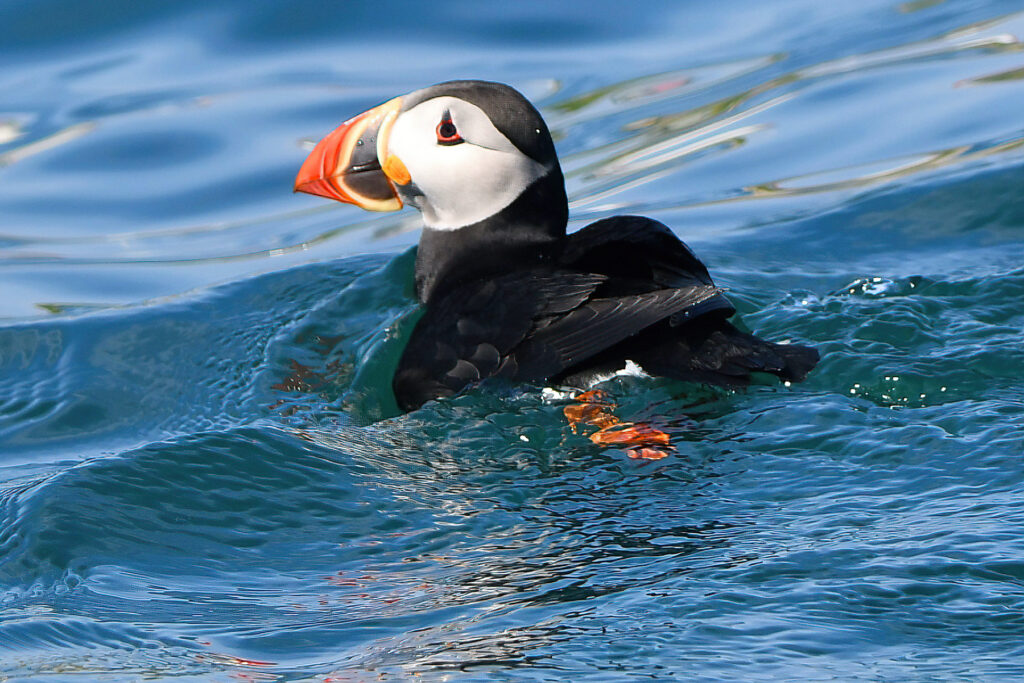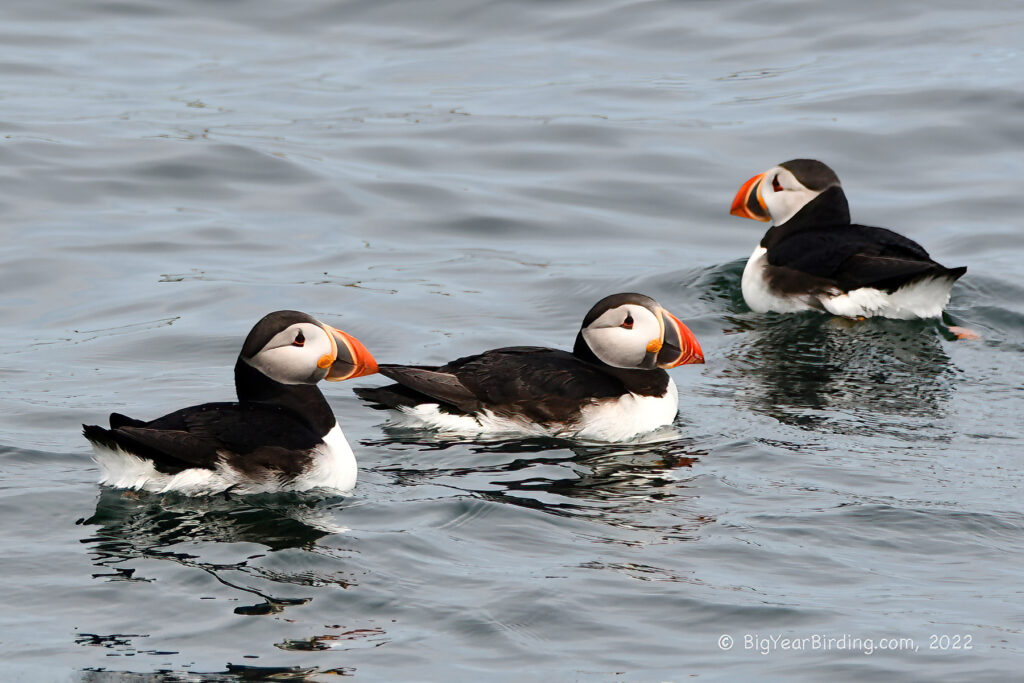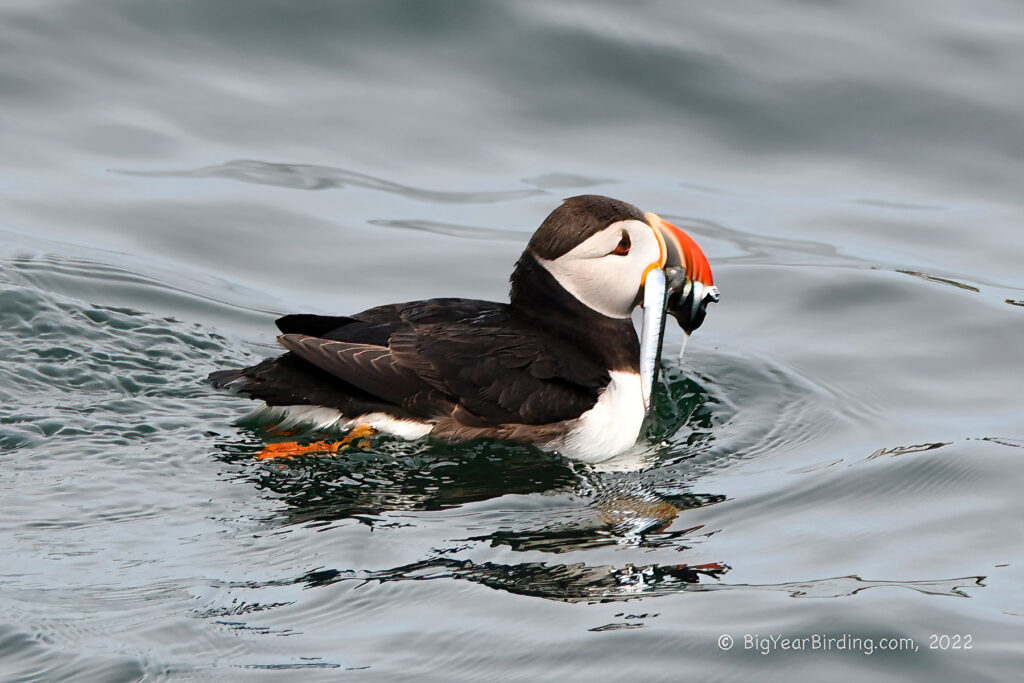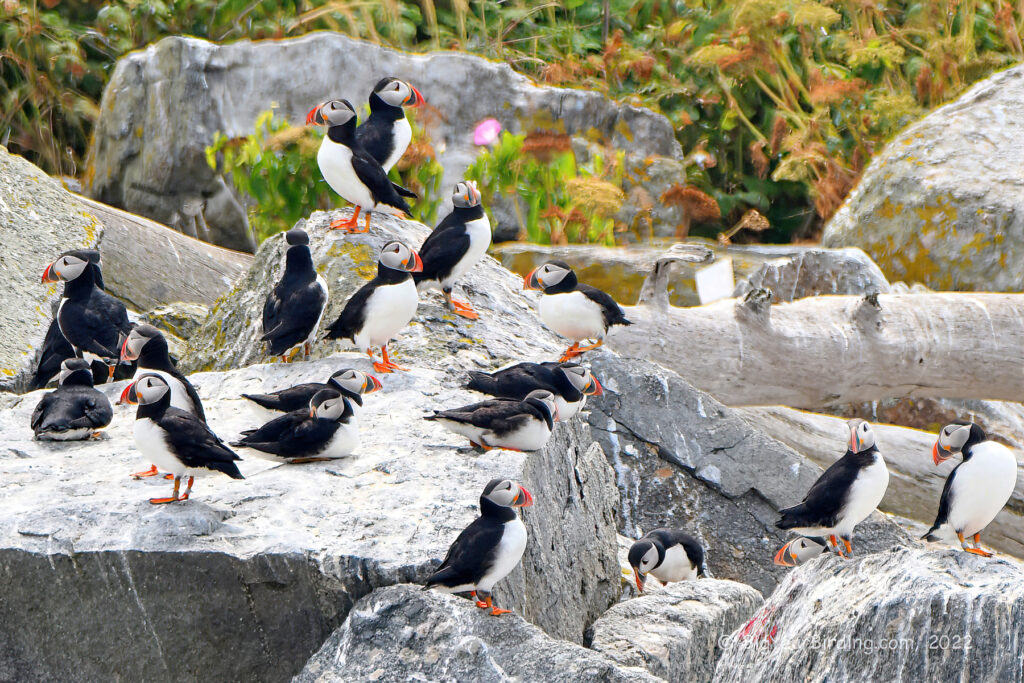
The Atlantic Puffin, also known as the common puffin, is a charismatic seabird that belongs to the auk family. This species has a distinctive appearance, with a large, colorful beak that is used for catching fish. Adult puffins typically measure around 10-11 inches in length and have a wingspan of approximately 18-21 inches. They weigh between 13-17 ounces, with males generally being larger and heavier than females.

One of the most distinguishing field marks of the Atlantic Puffin is its striking beak. During the breeding season, the beak is a bright orange-red color with a yellow tip. Outside of the breeding season, the beak fades to a duller color. Puffins also have black and white feathers, with a black back and wings, and a white belly. Their legs and webbed feet are bright orange.
The Atlantic Puffin is a migratory bird that spends its summers breeding on coastal cliffs and islands throughout the North Atlantic. They can be found in large colonies in areas such as Iceland, Newfoundland, and the Faroe Islands. During the winter months, puffins migrate to open ocean waters, spending their time at sea until it’s time to return to their breeding grounds in the spring.
Puffins are known for their excellent swimming and diving abilities, and can dive to depths of up to 200 feet to catch fish. They primarily feed on small fish such as herring and sand eels, but will also eat squid and crustaceans when available. Puffins use their wings to “fly” underwater, using a technique known as flying underwater, to catch their prey.

Despite being a popular and well-known species, Atlantic Puffin populations have been in decline in recent years. Threats to puffins include climate change, overfishing, and habitat loss. Conservation efforts are underway to help protect this beloved seabird and ensure that future generations can enjoy the sight of these colorful birds bobbing on the waves.

